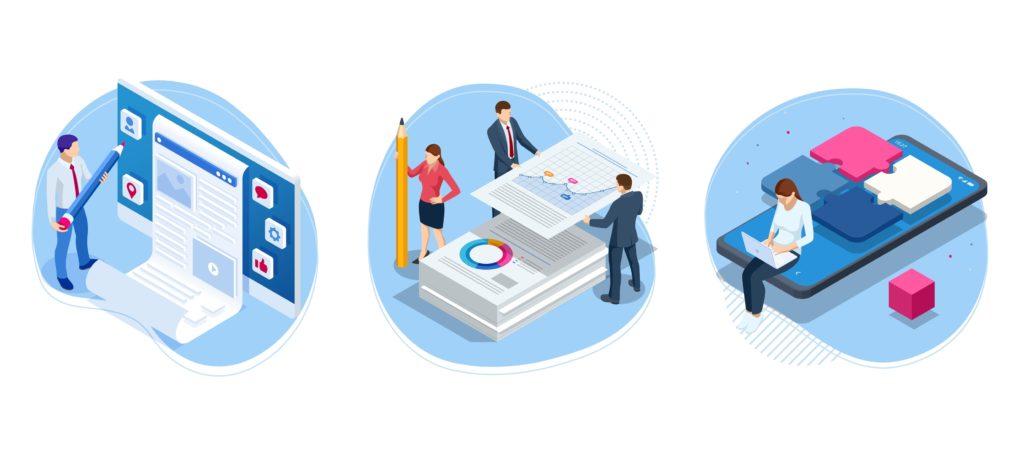LogiCommerce is trusted by global enterprise brands and wholesalers, across industries
Collecting Data occupies a very important part in the digital strategy of any online business. By analyzing this data, you can get to know your (potential) customers and customize content and different sales and marketing actions accordingly.
The best shopping experiences are provided when you know and understand the consumer through a two-way communication. With a Zero-Party Data Strategy, customers provide their data voluntarily to an eCommerce so that they can then use it properly to satisfy the needs of their customers.
In this post, you will learn what Zero-Party Data is, what it is based on, how this concept differs from the rest, and the main advantages it will bring to your eCommerce.
a captación de datos ocupa una parte muy importante en la estrategia digital de cualquier negocio online, ya que permite analizar y conocer más profundamente a los clientes potenciales de una marca y así, poder personalizar el contenido y las acciones que se realizan para dirigirse a cada uno de ellos.
Las mejores experiencias de compra se ofrecen cuando realmente se conoce y se entiende al consumidor a través de una comunicación bidireccional donde el cliente proporciona sus datos de forma voluntaria a un eCommerce para que éste los use de forma adecuada y poder satisfacer correctamente sus necesidades.
En este post conocerás qué es el Zero-Party Data, en qué se basa, en qué se diferencia este concepto del resto y las principales ventajas que aportará éste en tu eCommerce.
Contents
Zero-Party Data is a term used to define the data that customers intentionally and proactively provide to a brand during any interaction and through any channel and device. Users provide this information to the eCommerce to improve their online experience based on their profile and preferences.
This concept allows organizations to interact more effectively with their target audience since they can personalize the content after analyzing the data provided. In addition, it's a way to know the degree of trust that users have in a brand. In other words, the more users are willing to share their data, the more trust they have in that brand.
The key is to ask only for data that is truly meaningful and useful to deliver exceptional shopping experiences and improve customer satisfaction.
The most common way to request the user information you want to obtain is through surveys on the website itself or social networks, gamification, simple forms, knowledge quizzes, satisfaction surveys, etc. Brands usually reward users for offering them quality information through discounts, gifts, coupons, and others that are of value to each of them.

To understand how Zero-Party Data differs from First-Party Data and Third-Party Data, we need to know how all of them obtain the data of the users.
First-Party Data. That is the data that a company has collected directly from its consumers when they make a purchase, download a document, or fill out a form, among others. The data is provided consciously since customers are the ones who decide to enter certain data to act. It is a way to segment the audience of your business according to the behavior of users in your online store and use them for advertising campaigns.
Third-Party Data. This is data that a company buys from specialized organizations called Data Providers, which are in charge of collecting audiences through third-party cookies and grouping them into different segments to sell and use them for advertising campaigns.
Data Providers obtain data by analyzing the behavior of millions of Internet users. It is very important in this case that the data provider correctly explains where their data comes from and how they have obtained it to ensure that it is real and reliable.
As we can see, the main difference between all of them, including Zero-Party Data, is how user data is obtained. Consumers are becoming increasingly selective in deciding which companies they give their data to and to which they do not. For this reason, the more transparent an eCommerce is, the more trust it generates among its users. Zero-Party Data is about getting a user's data in a very clear and direct way so that users can decide whether they want to provide "x" information or not. In addition to being the most transparent strategy, it's the most reliable since the brand knows exactly how the data has been obtained and where it comes from to increase the conversion rate.
Increase audience loyalty.
Provide a climate of trust between the brand and the customer.
Allow better content personalization.
Obtain qualitative and 100% real data.
Respect users' privacy.
Improve Customer Experience.
Segment audiences in a more precise way.
Less investment with more efficiency.
Zero-Party Data respects the users' privacy since they are fully aware that certain information is being requested and they can decide whether or not they want to share their data with your brand.
Your eCommerce will store qualitative and reliable data to segment your audience according to different characteristics. This way, you can increase the users' satisfaction through all the touchpoints. With the data provided, you will be able to customize the content and add value to the shopping experience while getting the customer to become loyal to your brand by transmitting transparency and meeting their needs correctly.
It’s also important to say that this strategy will allow you to make a smaller investment. That is because your eCommerce will be able to obtain customer data for free to create more efficient and profitable advertising and marketing campaigns as it will allow you to target a much more accurate audience.
In the end, it’s a win-win strategy for both parties, as you get qualified user information to offer unique and differentiated shopping experiences to your customers.

